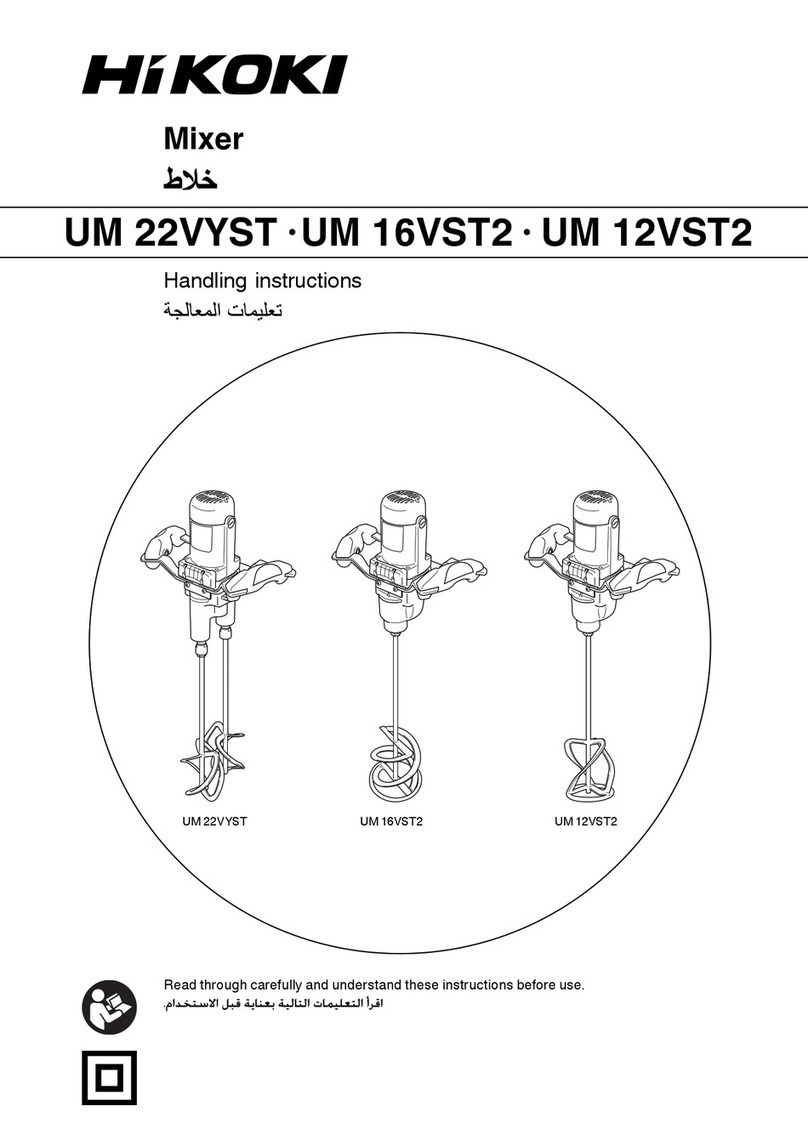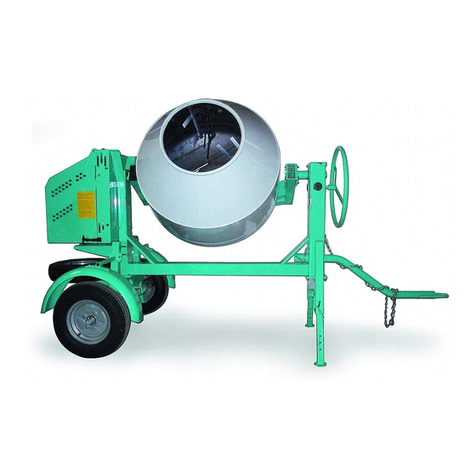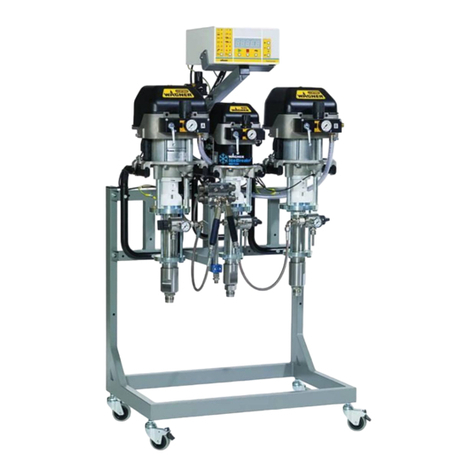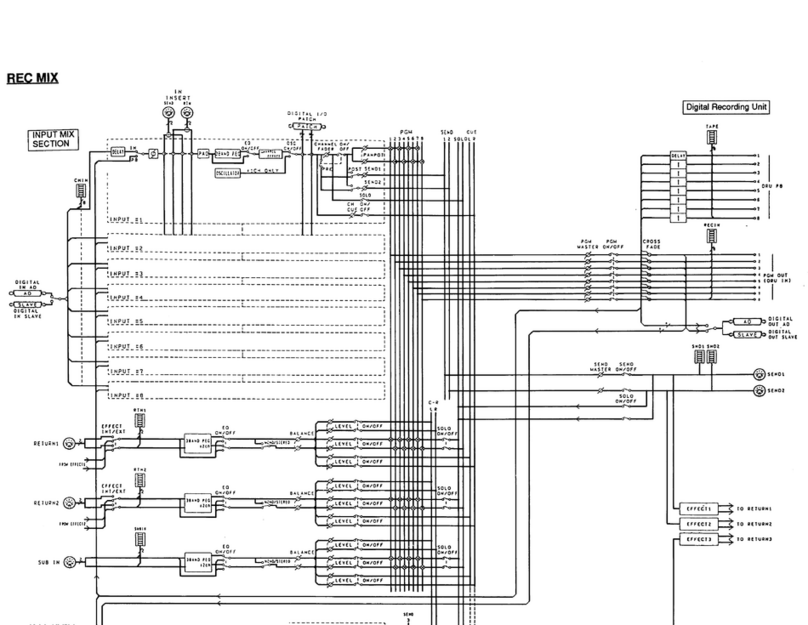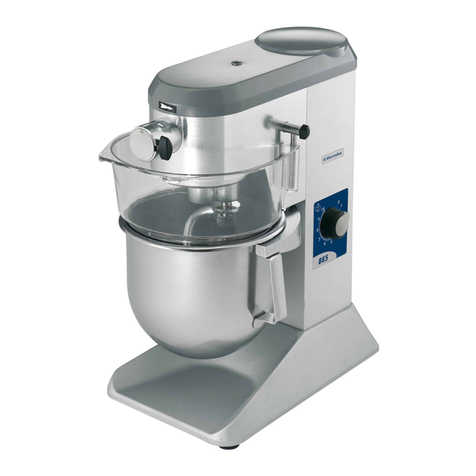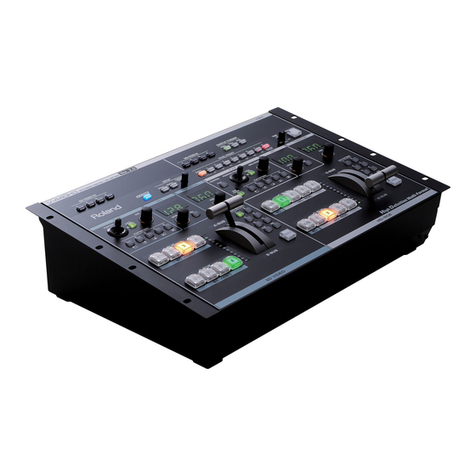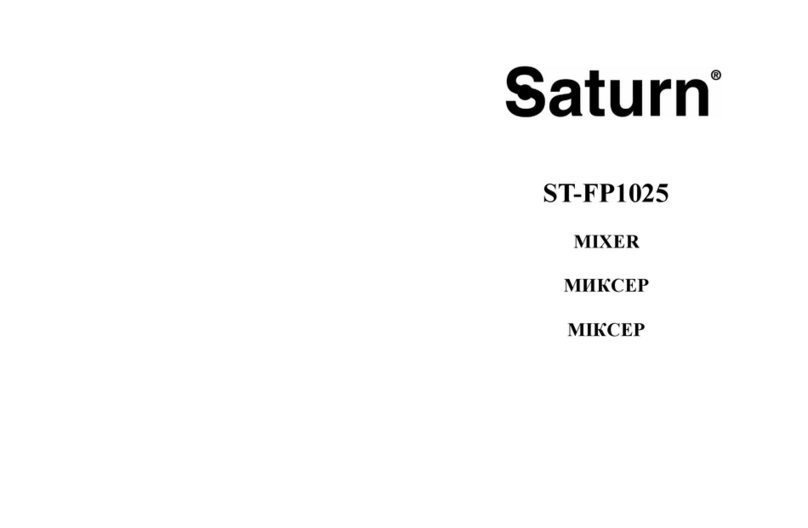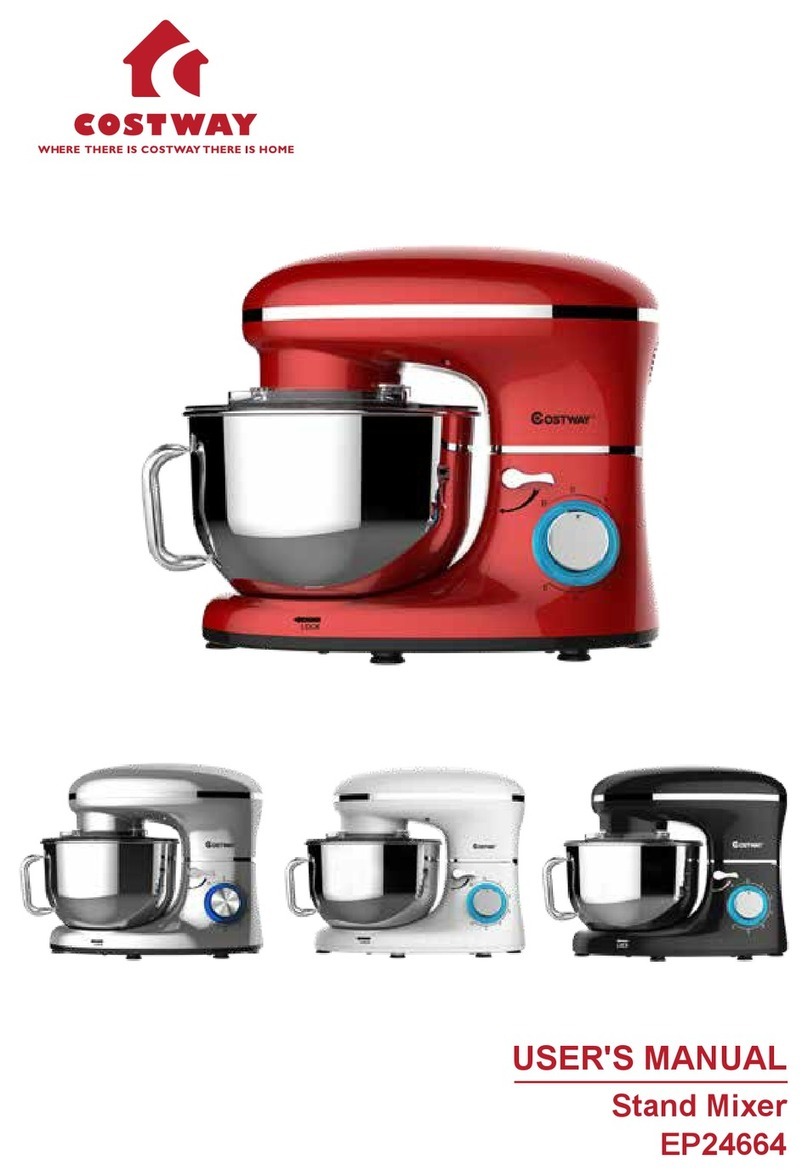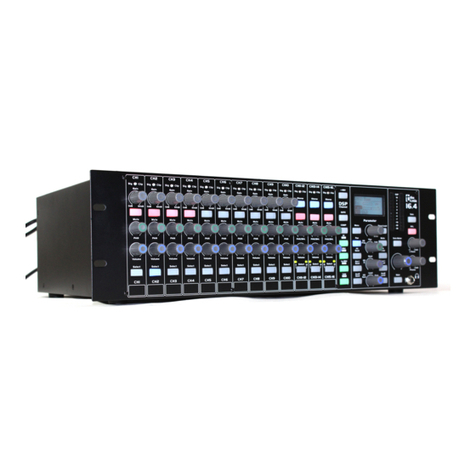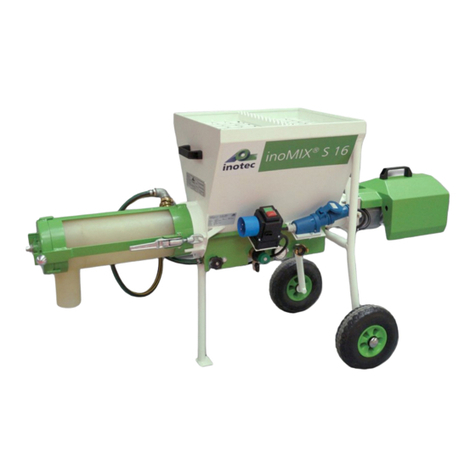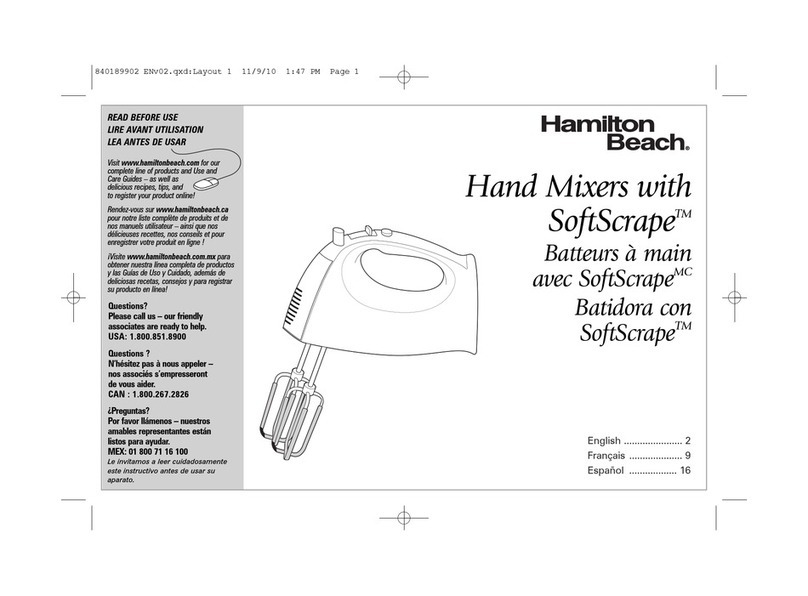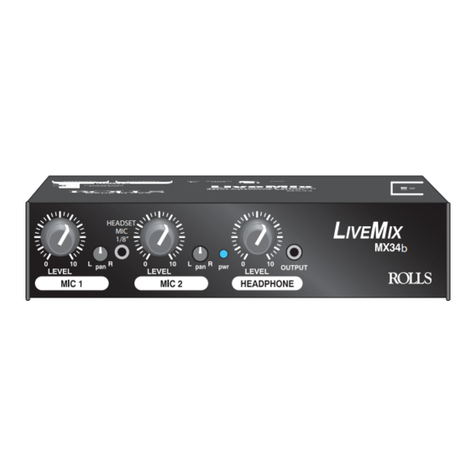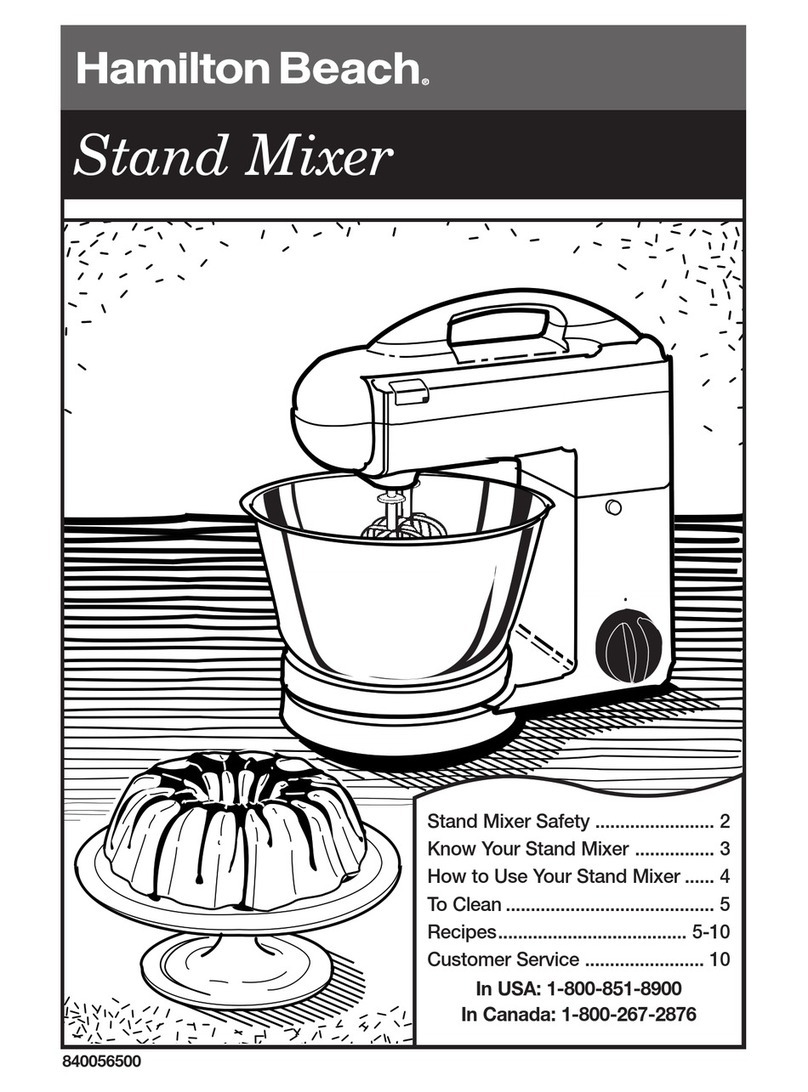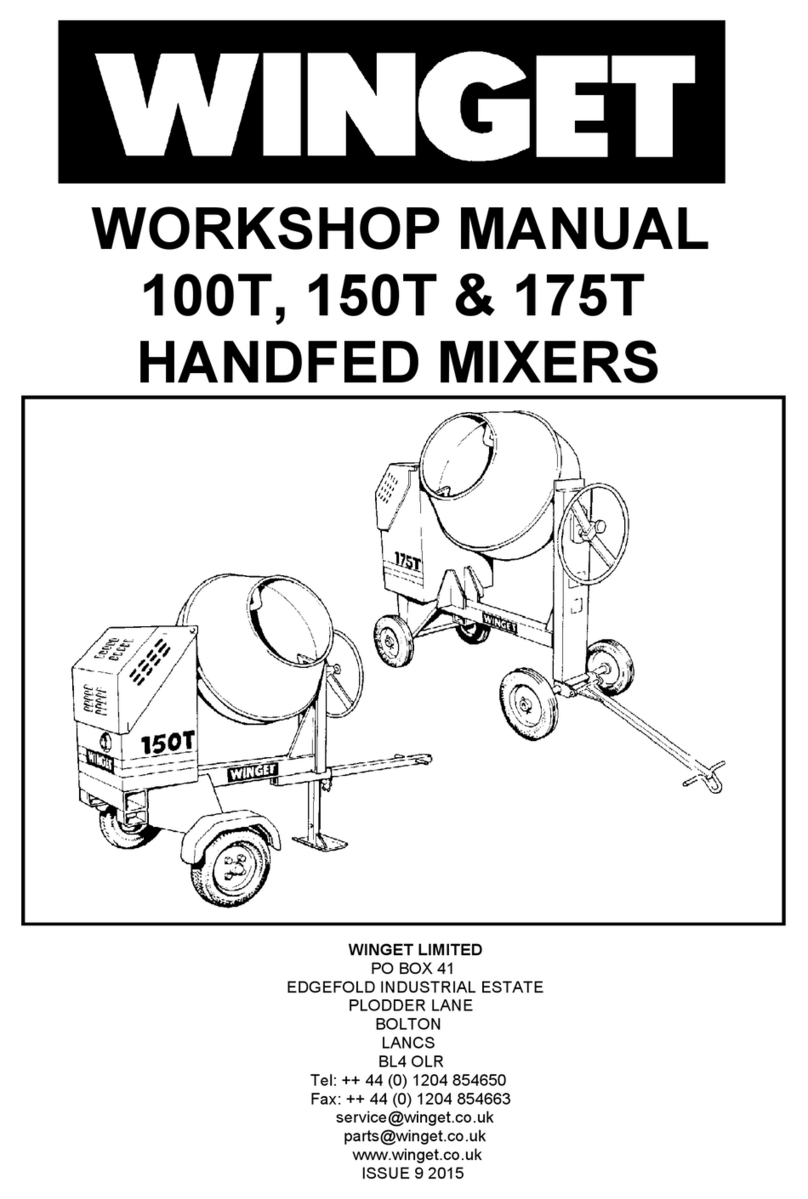HIKOKI UM 36DA User manual

Handling instructions
UM 36DA
0000BookUM36DAAU.indb10000BookUM36DAAU.indb1 2020/08/2714:37:412020/08/2714:37:41

2
1
2
3 4
0000BookUM36DAAU.indb20000BookUM36DAAU.indb2 2020/08/2714:37:412020/08/2714:37:41

3
5
Lock
++= +=
+=
67
ab
LH
0000BookUM36DAAU.indb30000BookUM36DAAU.indb3 2020/08/2714:37:422020/08/2714:37:42

4
8
9
0000BookUM36DAAU.indb40000BookUM36DAAU.indb4 2020/08/2714:37:432020/08/2714:37:43

5
10
22
11
ab
12 13
0000BookUM36DAAU.indb50000BookUM36DAAU.indb5 2020/08/2714:37:442020/08/2714:37:44

6
c) Prevent unintentional starting. Ensure the
switch is in the off-position before connecting
to power source and/or battery pack, picking up
or carrying the tool.
Carrying power tools with your finger on the switch
or energising power tools that have the switch on
invites accidents.
d) Remove any adjusting key or wrench before
turning the power tool on.
A wrench or a key left attached to a rotating part of
the power tool may result in personal injury.
e) Do not overreach. Keep proper footing and
balance at all times.
This enables better control of the power tool in
unexpected situations.
f) Dress properly. Do not wear loose clothing or
jewellery. Keep your hair and clothing away
from moving parts.
Loose clothes, jewellery or long hair can be caught in
moving parts.
g) If devices are provided for the connection of
dust extraction and collection facilities, ensure
these are connected and properly used.
Use of dust collection can reduce dust-related
hazards.
h) Do not let familiarity gained from frequent use
of tools allow you to become complacent and
ignore tool safety principles.
A careless action can cause severe injury within a
fraction of a second.
4) Power tool use and care
a) Do not force the power tool. Use the correct
power tool for your application.
The correct power tool will do the job better and safer
at the rate for which it was designed.
b) Do not use the power tool if the switch does not
turn it on and off.
Any power tool that cannot be controlled with the
switch is dangerous and must be repaired.
c) Disconnect the plug from the power source and/
or remove the battery pack, if detachable, from
the power tool before making any adjustments,
changing accessories, or storing power tools.
Such preventive safety measures reduce the risk of
starting the power tool accidentally.
d) Store idle power tools out of the reach of
children and do not allow persons unfamiliar
with the power tool or these instructions to
operate the power tool.
Power tools are dangerous in the hands of untrained
users.
e) Maintain power tools and accessories. Check
for misalignment or binding of moving parts,
breakage of parts and any other condition that
may affect the power tool’s operation.
If damaged, have the power tool repaired before
use.
Many accidents are caused by poorly maintained
power tools.
f) Keep cutting tools sharp and clean.
Properly maintained cutting tools with sharp cutting
edges are less likely to bind and are easier to control.
g) Use the power tool, accessories and tool bits
etc. in accordance with these instructions,
taking into account the working conditions and
the work to be performed.
Use of the power tool for operations different from
those intended could result in a hazardous situation.
h) Keep handles and grasping surfaces dry, clean
and free from oil and grease.
GENERAL POWER TOOL SAFETY
WARNINGS
WARNING
Read all safety warnings, instructions, illustrations and
specifications provided with this power tool.
Failure to follow all instructions listed below may result in
electric shock, fire and/or serious injury.
Save all warnings and instructions for future reference.
The term “power tool” in the warnings refers to your mains-
operated (corded) power tool or battery-operated (cordless)
power tool.
1) Work area safety
a) Keep work area clean and well lit.
Cluttered or dark areas invite accidents.
b) Do not operate power tools in explosive
atmospheres, such as in the presence of
flammable liquids, gases or dust.
Power tools create sparks which may ignite the dust
or fumes.
c) Keep children and bystanders away while
operating a power tool.
Distractions can cause you to lose control.
2) Electrical safety
a) Power tool plugs must match the outlet.
Never modify the plug in any way.
Do not use any adapter plugs with earthed
(grounded) power tools.
Unmodified plugs and matching outlets will reduce
risk of electric shock.
b) Avoid body contact with earthed or grounded
surfaces, such as pipes, radiators, ranges and
refrigerators.
There is an increased risk of electric shock if your
body is earthed or grounded.
c) Do not expose power tools to rain or wet
conditions.
Water entering a power tool will increase the risk of
electric shock.
d) Do not abuse the cord. Never use the cord for
carrying, pulling or unplugging the power tool.
Keep cord away from heat, oil, sharp edges or
moving parts.
Damaged or entangled cords increase the risk of
electric shock.
e) When operating a power tool outdoors, use an
extension cord suitable for outdoor use.
Use of a cord suitable for outdoor use reduces the
risk of electric shock.
f) If operating a power tool in a damp location
is unavoidable, use a residual current device
(RCD) protected supply.
Use of an RCD reduces the risk of electric shock.
3) Personal safety
a) Stay alert, watch what you are doing and use
common sense when operating a power tool.
Do not use a power tool while you are tired
or under the influence of drugs, alcohol or
medication.
A moment of inattention while operating power tools
may result in serious personal injury.
b) Use personal protective equipment. Always
wear eye protection.
Protective equipment such as a dust mask, non-skid
safety shoes, hard hat or hearing protection used for
appropriate conditions will reduce personal injuries.
0000BookUM36DAAU.indb60000BookUM36DAAU.indb6 2020/08/2714:37:442020/08/2714:37:44

7
Slippery handles and grasping surfaces do not
allow for safe handling and control of the tool in
unexpected situations.
5) Battery tool use and care
a) Recharge only with the charger specified by the
manufacturer.
A charger that is suitable for one type of battery pack
may create a risk of fire when used with another
battery pack.
b) Use power tools only with specifically
designated battery packs.
Use of any other battery packs may create a risk of
injury and fire.
c) When battery pack is not in use, keep it away
from other metal objects, like paper clips, coins,
keys, nails, screws or other small metal objects,
that can make a connection from one terminal to
another.
Shorting the battery terminals together may cause
burns or a fire.
d) Under abusive conditions, liquid may be ejected
from the battery; avoid contact. If contact
accidentally occurs, flush with water. If liquid
contacts eyes, additionally seek medical help.
Liquid ejected from the battery may cause irritation or
burns.
e) Do not use a battery pack or tool that is damaged
or modified.
Damaged or modified batteries may exhibit
unpredictable behaviour resulting in fire, explosion
or risk of injury.
f) Do not expose a battery pack or tool to fire or
excessive temperature.
Exposure to fire or temperature above 130°C may
cause explosion.
g) Follow all charging instructions and do not
charge the battery pack or tool outside the
temperature range specified in the instructions.
Charging improperly or at temperatures outside
the specified range may damage the battery and
increase the risk of fire.
6) Service
a) Have your power tool serviced by a qualified
repair person using only identical replacement
parts.
This will ensure that the safety of the power tool is
maintained.
b) Never service damaged battery packs.
Service of battery packs should only be performed
by the manufacturer or authorized service providers.
PRECAUTION
Keep children and infirm persons away.
When not in use, tools should be stored out of reach of
children and infirm persons.
ADDITIONAL SAFETY WARNINGS
1. Preparing and checking the work environment. Make
sure that the work site meets all the conditions laid forth
in the precautions.
2. Do not allow foreign matter to enter the hole for
connecting the rechargeable battery.
3. Never disassemble the rechargeable battery and
charger.
4. Never short-circuit the rechargeable battery.
Shortcircuiting the battery will cause a great electric
current and overheat. It results in burn or damage to the
battery.
5. Do not dispose of the battery in fire. If the battery is burnt,
it may explode.
6. Bring the battery to the shop from which it was purchased
as soon as the post-charging battery life becomes too
short for practical use. Do not dispose of the exhausted
battery.
7. Do not insert object into the air ventilation slots of the
charger. Inserting metal objects or inflammables into the
charger air ventilation slots will result in electrical shock
hazard or damaged charger.
8. When using this unit continuously, the unit may overheat,
leading to damage in the motor and switch. Therefore,
whenever the housing becomes hot, give the tool a
break for a while.
9. Make sure that the battery is installed firmly. If it is at all
loose it could come offand cause an accident.
10. Never touch moving parts.
Never place your hands, fingers or other body parts near
the tool’s moving parts.
11. Never operate without all guards in place.
Never operate this tool without all guards or safety
features in place and in proper working order. If
maintenance or servicing requires the removal of a
guard or safety feature, be sure to replace the guard or
safety feature before resuming operation of the tool.
12. NEVER leave tool running unattended. Turn power off.
Don’t leave tool until it comes to a complete stop.
13. The power tool is equipped with a temperature
protection circuit to protect the motor. Continuous work
may cause the temperature of the unit to rise, activating
the temperature protection circuit and automatically
stopping operation. If this happens, allow the power tool
to cool before resuming use.
14. Do not give a strong shock to the switch panel or break it.
It may lead to a trouble.
15. Do not use the product if the tool or the battery terminals
(battery mount) are deformed.
Installing the battery could cause a short circuit that
could result in smoke emission or ignition.
16. Keep the tool’s terminals (battery mount) free of swarf
and dust.
○Prior to use, make sure that swarf and dust have not
collected in the area of the terminals.
○During use, try to avoid swarf or dust on the tool from
falling on the battery.
○When suspending operation or after use, do not leave
the tool in an area where it may be exposed to falling
swarf or dust.
Doing so could cause a short circuit that could result in
smoke emission or ignition.
17. Always use the tool and battery at temperatures between
-5°C and 40°C.
CORDLESS MIXER SAFETY
INSTRUCTIONS
1. Hold the tool with both hands at the intended
handles.
Loss of control can cause personal injury.
2. Ensure sufficient ventilation when mixing flammable
materials to avoid a hazardous atmosphere.
Developing vapour may be inhaled or be ignited by the
sparks the power tool produces.
3. Do not mix food.
Power tools and their accessories are not designed for
processing food.
4. Ensure that the mixing container is placed in a firm
and secure position.
A container that is not properly secured may move
unexpectedly.
5. Follow the instructions and warnings for the
material to be mixed.
Material to be mixed may be harmful.
0000BookUM36DAAU.indb70000BookUM36DAAU.indb7 2020/08/2714:37:442020/08/2714:37:44

8
6. Do not reach into the mixing container with your
hands or insert any other objects into it while
mixing.
Contact with the mixer basket may lead to serious
personal injury.
7. Start up and run down the tool in the mixing
container only.
The mixer basket may bend or spin in an uncontrolled
manner.
8. Do not work materials containing asbestos.
Asbestos is considered carcinogenic.
9. Take protective measures when dust can develop
during working that is harmful to one's health,
combustible or explosive.
Example: Some dusts are regarded as carcinogenic.
Wear a dust mask and work with dust/chip extraction
when connectable.
10. Always wait until the machine has come to a
complete stop before placing it down.
The tool insert can jam and lead to loss of control over
the power tool.
11. Keep your hands and face from the mixing screw
and other rotating parts during use.
12. Attach the mixing screw and accessories securely,
as described in the instruction manual.
13. Before use, run the mixing screw under no load,
pointing away from others while doing so, to check
for abnormalities.
14. Avoid wearing gloves likely to catch on the tool
during use.
15. Make sure no one passes below you when working
at heights.
This will prevent injury if you drop any tools or materials.
16. Follow instruction for lubricating and changing
accessories.
CAUTION ON LITHIUM-ION BATTERY
To extend the lifetime, the lithium-ion battery equips with the
protection function to stop the output.
In the cases of 1 to 3 described below, when using this
product, even if you are pulling the switch, the motor may stop.
This is not the trouble but the result of protection function.
1. When the battery power remaining runs out, the motor
stops.
In such a case, charge it up immediately.
2. If the tool is overloaded, the motor may stop. In this
case, release the switch of tool and eliminate causes of
overloading. After that, you can use it again.
3. If the battery is overheated under overload work, the
battery power may stop.
In this case, stop using the battery and let the battery
cool. After that, you can use it again.
Furthermore, please heed the following warning and caution.
WARNING
In order to prevent any battery leakage, heat generation,
smoke emission, explosion and ignition beforehand, please
be sure to heed the following precautions.
1. Make sure that swarf and dust do not collect on the
battery.
○During work make sure that swarf and dust do not fall on
the battery.
○Make sure that any swarf and dust falling on the power
tool during work do not collect on the battery.
○Do not store an unused battery in a location exposed to
swarf and dust.
○Before storing a battery, remove any swarf and dust that
may adhere to it and do not store it together with metal
parts (screws, nails, etc.).
2. Do not pierce battery with a sharp object such as a
nail, strike with a hammer, step on, throw or subject the
battery to severe physical shock.
3. Do not use an apparently damaged or deformed battery.
4. Do not use the battery in reverse polarity.
5. Do not connect directly to an electrical outlets or car
cigarette lighter sockets.
6. Do not use the battery for a purpose other than those
specified.
7. If the battery charging fails to complete even when a
specified recharging time has elapsed, immediately stop
further recharging.
8. Do not put or subject the battery to high temperatures or
high pressure such as into a microwave oven, dryer, or
high pressure container.
9. Keep away from fire immediately when leakage or foul
odor are detected.
10. Do not use in a location where strong static electricity
generates.
11. If there is battery leakage, foul odor, heat generated,
discolored or deformed, or in any way appears abnormal
during use, recharging or storage, immediately remove it
from the equipment or battery charger, and stop use.
12. Do not immerse the battery or allow any fluids to flow
inside. Conductive liquid ingress, such as water, can
cause damage resulting in fire or explosion. Store your
battery in a cool, dry place, away from combustible and
flammable items. Corrosive gas atmospheres must be
avoided.
CAUTION
1. If liquid leaking from the battery gets into your eyes,
do not rub your eyes and wash them well with fresh
clean water such as tap water and contact a doctor
immediately.
If left untreated, the liquid may cause eye-problems.
2. If liquid leaks onto your skin or clothes, wash well with
clean water such as tap water immediately.
There is a possibility that this can cause skin irritation.
3. If you find rust, foul odor, overheating, discolor,
deformation, and/or other irregularities when using the
battery for the first time, do not use and return it to your
supplier or vendor.
WARNING
If a conductive foreign matter enters in the terminal of lithium
ion battery, the battery may be shorted, causing fire. When
storing the lithium ion battery, obey surely the rules of
following contents.
○Do not place conductive debris, nail and wires such as
iron wire and copper wire in the storage case.
○To prevent shorting from occurring, load the battery in
the tool or insert securely the battery cover for storing
until the ventilator is not seen.
REGARDING LITHIUM-ION BATTERY
TRANSPORTATION
When transporting a lithium-ion battery, please observe the
following precautions.
WARNING
Notify the transporting company that a package contains a
lithium-ion battery, inform the company of its power output
and follow the instructions of the transportation company
when arranging transport.
○Lithium-ion batteries that exceed a power output of
100 Wh are considered to be in the freight classification
of Dangerous Goods and will require special application
procedures.
○For transportation abroad, you must comply with
international law and the rules and regulations of the
destination country.
○If the BSL36B18 is installed in the power tool, the power
output will exceed 100 Wh and the unit will be classified
as Dangerous Goods for freight classification.
0000BookUM36DAAU.indb80000BookUM36DAAU.indb8 2020/08/2714:37:452020/08/2714:37:45

9
Wh
Power Output
2 to 3 digit number
USB DEVICE CONNECTION
PRECAUTIONS (UC18YSL3)
When an unexpected problem occurs, the data in a USB
device connected to this product may be corrupted or lost.
Always make sure to back up any data contained in the USB
device prior to use with this product.
Please be aware that our company accepts absolutely no
responsibility for any data stored in a USB device that is
corrupted or lost, nor for any damage that may occur to a
connected device.
WARNING
○Prior to use, check the connecting USB cable for any
defect or damage.
Using a defective or damaged USB cable can cause
smoke emission or ignition.
○When the product is not being used, cover the USB port
with the rubber cover.
Buildup of dust etc. in the USB port can cause smoke
emission or ignition.
NOTE
○There may be an occasional pause during USB
recharging.
○When a USB device is not being charged, remove the
USB device from the charger.
Failure to do so may not only reduce the battery life
of a USB device, but may also result in unexpected
accidents.
○It may not be possible to charge some USB devices,
depending on the type of device.
NAMES OF PARTS (Fig. 1 – Fig. 13)
Rubber shield
Shaft (A2) (Material: Plain bar steel)
Screw (A5) (Material: Plain steel)
Hex nut (M14)
Holder (M14) (Material: Plain steel)
Side handle
Battery
Battery cover
Switch trigger
Switch stopper
Lock-offbutton
Motor
Name plate
Shift lever
Charge indicator lamp
Battery level indicator switch
Battery level indicator lamp
Arrow
Double-ended wrench (17, 22 mm)
Double-ended wrench (17, 19 mm)
Latch
Rubber cover
USB port
USB cable
SYMBOLS
WARNING
The following show symbols used for the machine.
Be sure that you understand their meaning before
use.
UM36DA: Cordless Mixer
To reduce the risk of injury, user must read
instruction manual.
Direct current
V Rated voltage
n0No-load speed
Switching ON
Switching OFF
Lock
Switch locks to the “ON” position.
Disconnect the battery
Lock
Unlock
Change rotation speed - Low speed
Change rotation speed - High speed
Warning
Prohibited action
0000BookUM36DAAU.indb90000BookUM36DAAU.indb9 2020/08/2714:37:452020/08/2714:37:45

10
Battery
Remaining battery indicator switch
Lights ;
The battery remaining power is over 75%
Lights ;
The battery remaining power is 50%–75%.
Lights ;
The battery remaining power is 25%–50%.
Lights ;
The battery remaining power is less than 25%
Blinks ;
The battery remaining power is nearly empty.
Recharge the battery soonest possible.
Blinks ;
Output suspended due to high temperature.
Remove the battery from the tool and allow it to
fully cool down.
Blinks ;
Output suspended due to failure or malfunction.
The problem may be the battery so please
contact your dealer.
STANDARD ACCESSORIES
In addition to the main unit (1 unit), the package contains the
accessories listed on page 16.
Standard accessories are subject to change without notice.
SELECTING ACCESSORIES
The accessories of this machine are listed on page 17.
APPLICATIONS
Mixing materials such as paint, spraying material (sand wall
coatings, tile coatings), stucco, mortar, and leveling mortar
SPECIFICATIONS
1. Power tool
Model UM36DA
Voltage 36 V
No load speed 0–500 /min (in Low speed)
0–1200 /min (in High speed)
Mixing screw diameter
(Standard accessory) 150 mm
Maximum mixing screw diameter 200 mm
(Body) Dimensions
Length x Height x Width 929 x 224 x 109 mm
Battery available for this tool* Multi volt battery
Weight 4.4 kg (BSL36A18)
4.7 kg (BSL36B18)
* Existing batteries (BSL3660/3620/3626, BSL18xx series, etc.) cannot be used with this tool.
Electronic control
○Soft start
Reduces recoil against the operator by managing the
number of rotations during startup.
○0 Voltage Re-start Protection
The 0 voltage restart protection feature prevents the
power tool from restarting after the power has been
temporarily cut offduring operation.
○Constant speed
○Overload protection
This protection feature cuts offthe power to the motor
in the event of overloading of motor or a conspicuous
reduction in rotational speed during operation.
When the overload protection feature has been
activated, the motor may stop.
In this case, release the tool switch and eliminate causes
of overloading.
After that you can use it again.
○Overheat protection
This protection feature cuts offthe power to the motor
and stops the power tool in the event of overheating of
motor during operation.
When the overheat protection feature has been
activated, the motor may stop.
In this case, release the tool switch and cool it down in a
few minutes.
After that you can use it again.
NOTE
Due to HiKOKI’s continuing program of research and
development, the specifications herein are subject to
change without prior notice.
0000BookUM36DAAU.indb100000BookUM36DAAU.indb10 2020/08/2714:37:462020/08/2714:37:46

11
2. Battery
Model BSL36A18 BSL36B18
Voltage 36 V / 18 V (Automatic Switching*)
Battery capacity 2.5 Ah / 5.0 Ah 4.0 Ah / 8.0 Ah
(Automatic Switching*)
Available cordless
products** Multi volt series, 18 V product
Available charger Sliding charger for lithium ion
batteries
* The tool itself will automatically switch over.
** Please see our general catalogue for details.
3. Charger
Model UC18YSL3
Charging voltage 14.4 V–18 V
Weight 0.6 kg
CHARGING
Before using the power tool, charge the battery as follows.
1. Connect the charger’s power cord to the receptacle.
When connecting the plug of the charger to a receptacle,
the charge indicator lamp will blink in red (At 1- second
intervals).
2. Insert the battery into the charger.
Firmly insert the battery into the charger as shown in
Fig. 3 (on page 2).
3. Charging
When inserting a battery in the charger, the charge
indicator lamp will blink in blue.
When the battery becomes fully recharged, the charge
indicator lamp will light up in green. (See Table 1)
(1) Charge indicator lamp indication
The indications of the charge indicator lamp will be as
shown in Table 1, according to the condition of the
charger or the rechargeable battery.
Table 1
Indications of the charge indicator lamp
Charge
indicator
lamp
(RED /
BLUE /
GREEN /
PURPLE)
Before
charging
Blinks
(RED)
Lights for 0.5 seconds. Does not light for
0.5 seconds. (offfor 0.5 seconds) Plugged into power source
While
charging
Blinks
(BLUE)
Lights for 0.5 seconds. Does not light for
1 second. (offfor 1 second) Battery capacity at less than 50%
Blinks
(BLUE)
Lights for 1 second. Does not light
for 0.5 seconds. (offfor 0.5 seconds) Battery capacity at less than 80%
Lights
(BLUE)
Lights continuously Battery capacity at more than 80%
Charging
complete
Lights
(GREEN)
Lights continuously
(Continuous buzzer sound: about 6
seconds)
Overheat
standby
Blinks
(RED)
Lights for 0.3 seconds. Does not light for
0.3 seconds. (offfor 0.3 seconds)
Battery overheated. Unable to
charge. (Charging will commence
when battery cools)
Charging
impossible
Flickers
(PURPLE)
Lights for 0.1 seconds. Does not light for
0.1 seconds. (offfor 0.1 seconds)
(Intermittent buzzer sound: about 2
seconds)
Malfunction in the battery or the
charger
0000BookUM36DAAU.indb110000BookUM36DAAU.indb11 2020/08/2714:37:462020/08/2714:37:46

12
(2) Regarding the temperatures and charging time of the rechargeable battery
The temperatures and charging time will become as shown in Table 2.
Table 2
Charger UC18YSL3
Battery
Type of battery Li-ion
Temperatures at which the
battery can be recharged 0°C–50°C
Charging voltage V 14.4 18
Charging time,
approx. (At 20°C)
BSL14xx series BSL18xx series Multi volt
series
(4 cells) (8 cells) (5 cells) (10 cells) (10 cells)
min.
BSL1415S : 15
BSL1415 : 15
BSL1415X : 15
BSL1420 : 20
BSL1425 : 25
BSL1430C : 30
BSL1430 : 20
BSL1440 : 26
BSL1450 : 32
BSL1460 : 38
BSL1815S : 15
BSL1815 : 15
BSL1815X : 15
BSL1820 : 20
BSL1825 : 25
BSL1830C : 30
BSL1850C : 32
BSL1830 : 20
BSL1840 : 26
BSL1850 : 32
BSL1860 : 38
BSL36A18 : 32
BSL36B18 : 52
USB Charging voltage V 5
Charging current A 2
NOTE
The recharging time may vary according to the ambient
temperature and power source voltage.
4. Disconnect the charger’s power cord from the
receptacle.
5. Hold the charger firmly and pull out the battery.
NOTE
Be sure to pull out the battery from the charger after use,
and then keep it.
Regarding electric discharge in case of new batteries,
etc.
As the internal chemical substance of new batteries and
batteries that have not been used for an extended period
is not activated, the electric discharge might be low when
using them the first and second time. This is a temporary
phenomenon, and normal time required for recharging
will be restored by recharging the batteries 2–3 times.
How to make the batteries perform longer.
(1) Recharge the batteries before they become completely
exhausted.
When you feel that the power of the tool becomes
weaker, stop using the tool and recharge its battery. If
you continue to use the tool and exhaust the electric
current, the battery may be damaged and its life will
become shorter.
(2) Avoid recharging at high temperatures.
A rechargeable battery will be hot immediately after
use. If such a battery is recharged immediately after
use, its internal chemical substance will deteriorate, and
the battery life will be shortened. Leave the battery and
recharge it after it has cooled for a while.
CAUTION
○If the battery is charged while it is heated because
it has been left for a long time in a location subject to
direct sunlight or because the battery has just been
used, the charge indicator lamp of the charger lights
for 0.3 seconds, does not light for 0.3 seconds (offfor
0.3 seconds). In such a case, first let the battery cool,
then start charging.
○When the charge indicator lamp flickers (at 0.2-second
intervals), check for and take out any foreign objects in
the charger’s battery connector. If there are no foreign
objects, it is probable that the battery or charger is
malfunctioning. Take it to your authorized Service
Center.
○Since the built-in micro computer takes about
3 seconds to confirm that the battery being charged with
UC18YSL3 is taken out, wait for a minimum of 3 seconds
before reinserting it to continue charging. If the battery
is reinserted within 3 seconds, the battery may not be
properly charged.
MOUNTING AND OPERATION
Action Figure Page
Removing and inserting the battery (*1) 2 2
Charging 3 2
Remaining battery indicator 4 2
Switch operation 5 3
Low-speed / High-speed changeover
(*2) 63
Mounting and dismounting of the
holder (*3) 73
Fixing side handle 8 4
Mounting of the screw (*4) 9 4
How to use (*5) 10 5
Charging a USB device from an
electrical outlet 11-a 5
Charging a USB device and battery
from an electrical outlet 11-b 5
How to recharge USB device 12 5
When charging of USB device is
completed 13 5
Selecting accessories ―17
0000BookUM36DAAU.indb120000BookUM36DAAU.indb12 2020/08/2714:37:462020/08/2714:37:46

13
(*1) Removing and inserting the battery
NOTE
Ensure that the battery cover is securely closed unless
you are removing or installing the battery.
If any water, concrete, or dust enters the body of the
power tool or the terminals of the battery, a failure may
occur.
(*2) Low-speed / High-speed changeover
CAUTION
Avoid mixing viscous materials in Mode 2 (High speed).
The motor will stop if it detects an excessive load.
Overloading may damage the tool.
To change speed, rotate the shift lever as indicated by the
arrow. The numeral “1” engraved on the machine body
denotes low speed, the numeral “2” denotes high speed.
If it is hard to turn the shift lever, turn the shaft slightly in
either direction and then turn the gear shift lever again.
NOTE
○Align the arrow on the shift lever to one of the numbered
positions.
Use with the shift lever set between the numbered
positions may damage the tool.
○Rotate the shift lever only when the motor is not
operating.
Changing the shift lever position while the motor is
running may damage the tool.
Mode Mode 1
(Low speed)
Mode 2
(High speed)
Rotation
speed 0–500 /min 0–1200 /min
Usage
High viscosity
materials
(e.g., mortar or
leveling mortar)
Low viscosity
materials
(e.g., paint)
(*3) Mounting and dismounting of the holder
Attached to the main unit when packing.
(*4) Mounting of the screw
CAUTION
Take extreme care to avoid injury when mounting or
detaching the mixing screw.
(*5) How to use
NOTE
○Ensure that the mixing container is placed in a firm and
secure position.
A container that is not properly secured may move
unexpectedly.
○Place the mixing screw inside the container and check
for safety before turning on the switch.
Once mixing is complete, wait for the mixing screw to
come to a complete stop before removing it from the
container.
○Start mixing at low speed. Assess mixing status before
adjusting the speed.
MAINTENANCE AND INSPECTION
CAUTION
Be sure to turned offthe switch and remove the battery
before maintenance and inspection.
1. Mixing screw cleaning
To extend the life of the screw and shaft, clean by
washing in water after use.
CAUTION
Do not leave the tool with the mixing screw immersed in
plaster.
Doing so may result in corrosion and flaking of the screw
surface and plaster contamination.
2. Inspecting the mounting screws
Regularly inspect all mounting screws and ensure that
they are properly tightened. Should any of the screws be
loose, retighten them immediately. Failure to do so could
result in serious hazard.
3. Maintenance of the motor
The motor unit winding is the very “heart” of the power
tool. Exercise due care to ensure the winding does not
become damaged and/or wet with oil or water.
4. Inspection of terminals (tool and battery)
Check to make sure that swarf and dust have not
collected on the terminals.
On occasion check prior, during and after operation.
CAUTION
Remove any swarf or dust which may have collected on
the terminals.
Failure to do so may result in malfunction.
5. Cleaning on the outside
After using the power tool, wipe the tool body (in
particular, the ventilation holes, areas around the switch
trigger, and areas near the edges of the covers require
careful wiping) to remove any concrete using a cloth that
is soaked in a soap solution and well wrung.
Do not use gasoline, thinner, benzine, or kerosene as
they can dissolve plastics.
Immediately remove any concrete that has become
attached to the flexible assembly.
6. Storage
Store the power tool in a place in which the temperature
is less than 40°C and out of reach of children.
NOTE
Storing lithium-ion batteries.
Make sure the lithium-ion batteries have been fully
charged before storing them.
Prolonged storage (3 months or more) of batteries with
a low charge may result in performance deterioration,
significantly reducing battery usage time or rendering
the batteries incapable of holding a charge.
However, significantly reduced battery usage time may
be recovered by repeatedly charging and using the
batteries two to five times.
If the battery usage time is extremely short despite
repeated charging and use, consider the batteries dead
and purchase new batteries.
CAUTION
In the operation and maintenance of power tools, the
safety regulations and standards prescribed in each
country must be observed.
Important notice on the batteries for the HiKOKI
cordless power tools
Please always use one of our designated genuine
batteries. We cannot guarantee the safety and
performance of our cordless power tool when used with
batteries other than these designated by us, or when
the battery is disassembled and modified (such as
disassembly and replacement of cells or other internal
parts).
NOTE
Due to HiKOKI’s continuing program of research and
development, the specifications herein are subject to
change without prior notice.
0000BookUM36DAAU.indb130000BookUM36DAAU.indb13 2020/08/2714:37:462020/08/2714:37:46

14
TROUBLESHOOTING
Use the inspections in the table below if the tool does not operate normally. If this does not remedy the problem, consult your
dealer or the HiKOKI Authorized Service Center.
1. Power tool
Symptom Possible cause Remedy
Does not move No battery remaining. Charge the battery.
Battery is not properly installed. Push battery in until a click is heard.
Battery was installed with the switch pulled. Due to activation of the safety feature.
Release the switch once and pull it again so
the tool moves.
Suddenly stopped Overload protection circuit activated. Remove cause of overload.
The material being mixed is viscous. Switch from High speed to Low speed.
Heat protection circuit activated due to
overheating of the battery or the tool itself.
Allow battery and tool to fully cool down.
Switch can’t be pulled Lock-offbutton is pushed in Release the Lock-offbutton.
Cannot install battery Attempting to install battery other than type
specified.
Use Multi Volt type battery.
0000BookUM36DAAU.indb140000BookUM36DAAU.indb14 2020/08/2714:37:462020/08/2714:37:46

15
2. Charger
Symptom Possible cause Remedy
The charge indicator lamp
is rapidly flickers purple,
and battery charging
doesn’t begin.
The battery is not inserted all the way. Insert the battery firmly.
There is foreign matter in the battery
terminal or where the battery is attached.
Remove the foreign matter.
The charge indicator lamp
blinks red, and battery
charging doesn’t begin.
The battery is not inserted all the way. Insert the battery firmly.
The battery is overheated. If left alone, the battery will automatically
begin charging if its temperature decreases,
but this may reduce battery life. It is
recommended that the battery be cooled in
a well-ventilated location away from direct
sunlight before charging it.
Battery usage time is short
even though the battery is
fully charged.
The battery’s life is depleted. Replace the battery with a new one.
The battery takes a long
time to charge.
The temperature of the battery, the charger,
or the surrounding environment is extremely
low.
Charge the battery indoors or in another
warmer environment.
The charger’s vents are blocked, causing its
internal components to overheat.
Avoid blocking the vents.
The cooling fan is not running. Contact a HiKOKI Authorized Service
Center for repairs.
The USB power lamp
has switched offand the
USB device has stopped
charging.
The battery’s capacity has become low. Replace the battery with one that has
capacity remaining.
Plug the charger’s power plug into an
electric socket.
USB power lamp does not
switch offeven though the
USB device has finished
charging.
The USB power lamp lights up green to
indicate that USB charging is possible.
This is not a malfunction.
It is unclear what the
charging status of a USB
device is, or whether its
charging is complete.
The USB power lamp does not switch off
even when charging is complete.
Examine the USB device that is charging to
confirm its charging status.
Charging of a USB device
pauses midway.
The charger was plugged into an electrical
socket while the USB device was being
charged using the battery as the power
source.
This is not a malfunction.
The charger pauses USB charging for about
5 seconds when it is differentiating between
power sources.
A battery was inserted into the charger while
the USB device was being charged using a
power socket as the power source.
Charging of the USB device
pauses midway when the
battery and the USB device
are being charged at the
same time.
The battery has become fully charged. This is not a malfunction.
The charger pauses USB charging for
about 5 seconds while it checks whether
the battery has successfully completed
charging.
Charging of the USB
device doesn’t start when
the battery and the USB
device are being charged
at the same time.
The remaining battery capacity is extremely
low.
This is not a malfunction.
When the battery capacity reaches a certain
level, USB charging automatically begins.
0000BookUM36DAAU.indb150000BookUM36DAAU.indb15 2020/08/2714:37:462020/08/2714:37:46

16
UM36DA
(XC) (NN)
11
11
11
11
11
22
17
22
17
22
19
17
11
BSL36A18
1―
UC18YSL3
1―
1―
0000BookUM36DAAU.indb160000BookUM36DAAU.indb16 2020/08/2714:37:472020/08/2714:37:47

17
BSL36A18
BSL36C18
UC18YSL3 (14.4V–18V)
329897BSL36B18
0000BookUM36DAAU.indb170000BookUM36DAAU.indb17 2020/08/2714:37:482020/08/2714:37:48

18
0000BookUM36DAAU.indb180000BookUM36DAAU.indb18 2020/08/2714:37:482020/08/2714:37:48

19
0000BookUM36DAAU.indb190000BookUM36DAAU.indb19 2020/08/2714:37:482020/08/2714:37:48

101
Code No. C99737811 G
Printed in China
Shinagawa Intercity Tower A, 15-1, Konan 2-chome,
Minato-ku, Tokyo, Japan
0000BookUM36DAAU.indb200000BookUM36DAAU.indb20 2020/08/2714:37:482020/08/2714:37:48
Other manuals for UM 36DA
1
Table of contents
Other HIKOKI Mixer manuals
